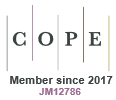Cyttaria (Cyttariales): Coevolution with Nothofagus, and Evolutionary Relationship to the Boedijnopezizeae (Pezizales, Sarcoscyphaceae)
Richard P Korf
Australian Journal of Botany Supplementary Series
13(10) 77 - 88
Published: 1983
Abstract
Cyuaria is restricted to Nothofagus on which it is obligately parasitic, forming stem and twig galls on which compound apothecial stromata develop. Both genera occur only in the Pacific Basin. Species of Nothofagus have a long fossil record, and are currently divided into three groups on the basis of pollen morphology. The extant Nothofagus flora of South America and of Australia-New Zealand has representatives of two of the three pollen types, and species of CyUaria infect species of both types, with various host ranges. The oldest type of Nothofagus pollen was known only in fossil species until explorations in the late 1930s revealed a large, previously unknown Nothofagus flora in Papua New Guinea and in New Caledonia. Only that oldest pollen type occurs in these areas, and no CyUaria species have been found to attack any of them. It is postulated that Cyuaria arose after disjunction of the oldest pollen type Nothofagi from the two pollen types that arose later. On the basis of the known parasitism of species of Cyuaria, an evolutionary history that could account for the distribution of CyUaria species and their Nothofagus hosts is proposed. The lack of a fossil record for Cyuaria renders the proposal speculative. CyUaria has usually occupied an isolated position in fungal classifications. Microanatomical and karyological evidence to support a derivation from or an evolution to the saprophytic Pezizales, Sarcoscyphaceae, Boedijnopezizeae is presented, and alternative hypotheses are discarded.https://doi.org/10.1071/BT8310077
© CSIRO 1983


